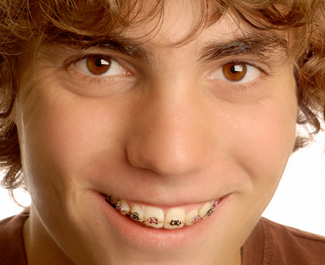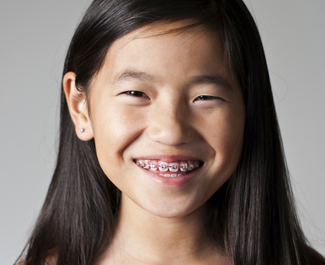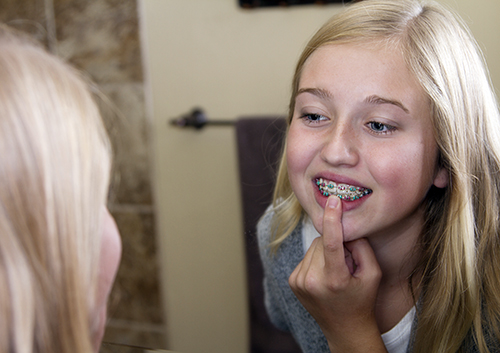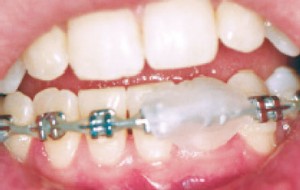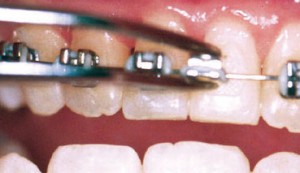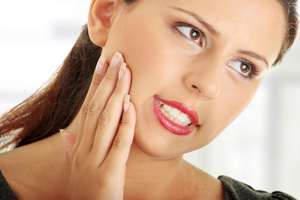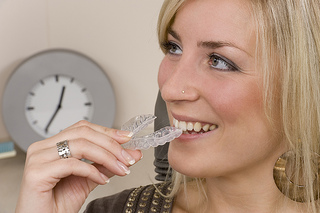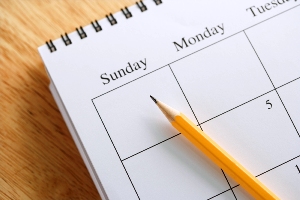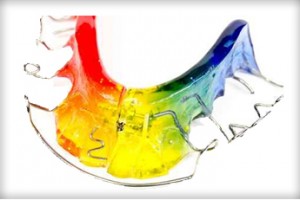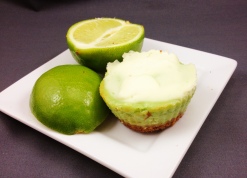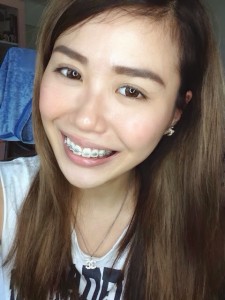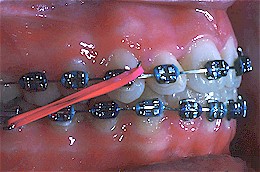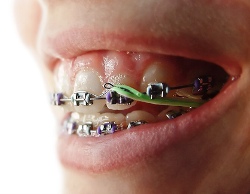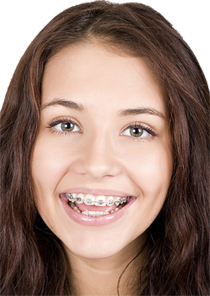What Role Do Elastics Play In Orthodontics
March 26th, 2025
It is not unusual for elastics (a.k.a. rubber bands) to be prescribed as part of your orthodontic treatment when you are wearing braces. Your braces, which consist of brackets and wires, work by gently applying pressure to the teeth, and that pressure causes them to move into the correct position. In some cases, elastics are placed on your braces in strategic places in order to apply additional pressure.
How Elastics Work
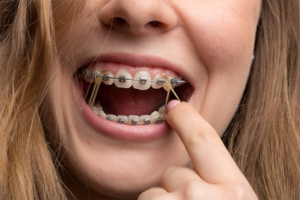
Customized for each patient, the elastics typically stretch over tiny loops on the top and bottom brackets. When worn as prescribed, these tiny elastics will apply the gentle and steady pressure needed to guide your teeth into the desired position and align one arch to the other. Without the use of these elastics, you may not be able to achieve the results you want, or you may have to wear braces for a longer period of time.
The Do's and Don'ts
Elastics must be worn as prescribed, and patient cooperation is essential to a successful outcome. Here's how you can do your part:
- DO - Change your elastics at least once a day. Remember to always wash your hands before removing and replacing the elastics;
- DON'T - Double up on elastics as this will cause too much pressure on the tooth or teeth and can actually harm the root of the tooth;
- DO - Get in the habit of carrying around an extra bag of elastics and replace them as soon as one breaks. By consistently wearing your elastics, you may shorten the overall time needed to wear braces;
- DON'T - Guess how they should be worn. If you are unsure where to place the elastics, call our office immediately so that we can help you get your elastics placed correctly;
- DO - Remove your elastics when eating and brushing your teeth, but remember to replace them when you are done.
- DON'T - Overstretch or overuse the same elastics or they will lose their strength and will be ineffective. You can avoid this by changing your elastics daily.
- DO - Call us immediately if you lose or run out of elastics. Please do not wait until your next regularly scheduled visit.
- DON'T - Forget to wear them consistently, as directed. By wearing your elastics exactly as prescribed, you will get better, faster, and more comfortable results. Generally, any discomfort from the elastics will disappear within a day or two, so hang in there.
- DO - Have fun with your braces and elastics. Elastics come in many different colors, so pick your favorite colors and show off your gorgeous smile!
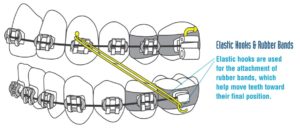
Elastics are a key part of your orthodontic treatment, and learning how to remove and replace them correctly is an important part of your treatment. Before we send you on your journey to a happy, healthy smile, we'll make sure you understand all there is to know about taking care of your braces. Of course, if you have any questions about your orthodontic treatment, be sure to give the team at Bel Air Orthodontics a call.








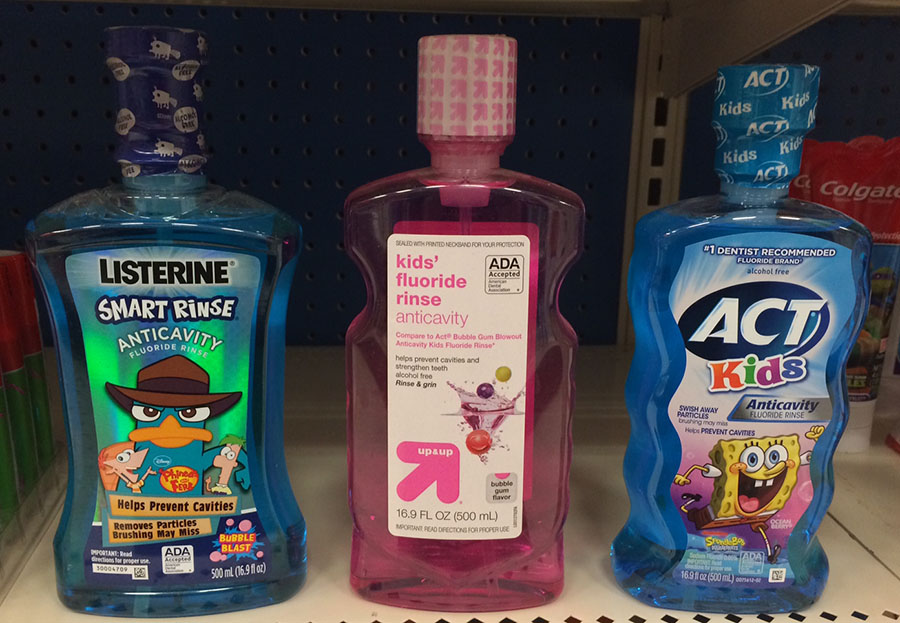
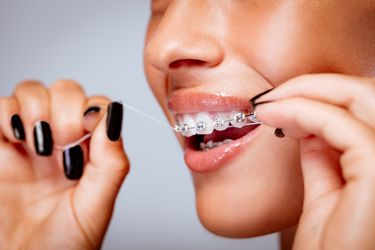
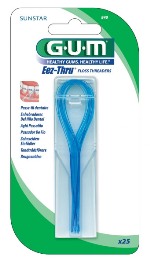
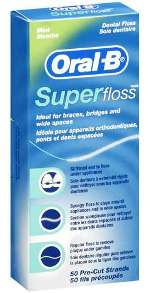



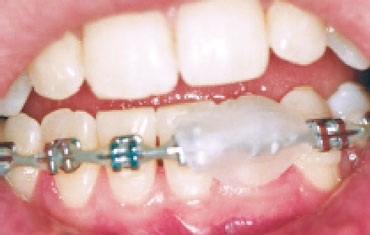
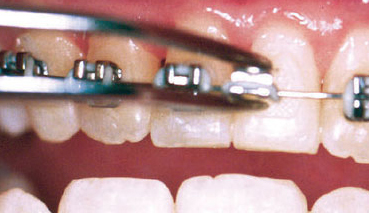
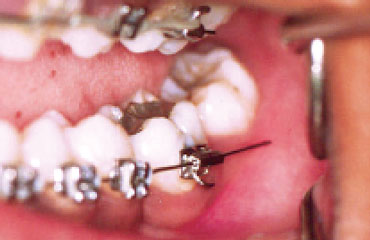

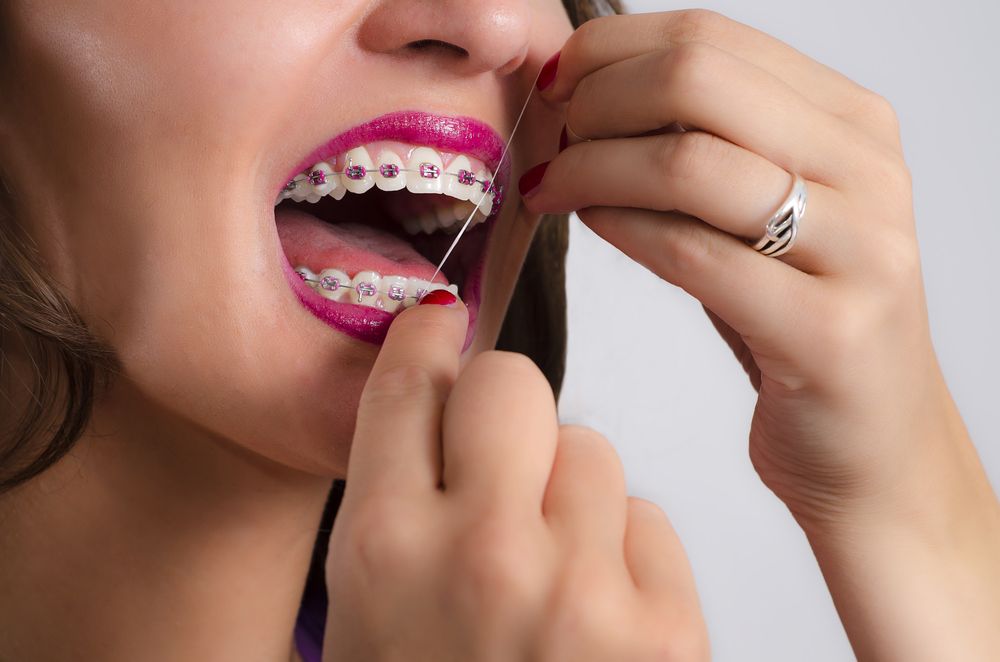

 It's that time of year again; a time when we're thinking about those all too familiar New Year's resolutions. Promising to spend less, exercise more and clear the clutter are often at the top of our list, but this year the team at Bel Air Orthodontics has decided to keep our New Year's resolutions easy and entertaining. We've vowed to laugh more, smile often and have more fun. In the spirit of that fun, we came up with a few resolutions for our patients in orthodontic treatment. Tell us what you think, and share your own New Year's resolutions with us on our
It's that time of year again; a time when we're thinking about those all too familiar New Year's resolutions. Promising to spend less, exercise more and clear the clutter are often at the top of our list, but this year the team at Bel Air Orthodontics has decided to keep our New Year's resolutions easy and entertaining. We've vowed to laugh more, smile often and have more fun. In the spirit of that fun, we came up with a few resolutions for our patients in orthodontic treatment. Tell us what you think, and share your own New Year's resolutions with us on our 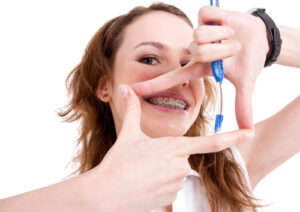 Wearing braces means learning about a whole new world of dental accessories. Brackets. Arch wires. Ligatures. Rubber bands. Wax.
Wearing braces means learning about a whole new world of dental accessories. Brackets. Arch wires. Ligatures. Rubber bands. Wax. Halloween is a fun time of year, but before you head out to trick-or-treat, Dr. Godwin would like to offer a few tips for keeping your braces healthy and happy. While Halloween treats are tempting, it's important to remember that many can cause havoc for trick-or-treaters with braces. Treats that are sticky, chewy, hard or crunchy can potentially cause damage to braces, clear aligners, and other orthodontic appliances. In addition to patient discomfort, a broken bracket or loose wire may prolong treatment and require additional appointments.
Halloween is a fun time of year, but before you head out to trick-or-treat, Dr. Godwin would like to offer a few tips for keeping your braces healthy and happy. While Halloween treats are tempting, it's important to remember that many can cause havoc for trick-or-treaters with braces. Treats that are sticky, chewy, hard or crunchy can potentially cause damage to braces, clear aligners, and other orthodontic appliances. In addition to patient discomfort, a broken bracket or loose wire may prolong treatment and require additional appointments.
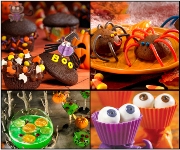
 While you may just see a shiny smile full of metal or ceramic, the truth is that there is so much more going on beneath the surface of creating that beautiful new grin. Braces might just look like a bunch of metal parts, but each component is strategically placed to help guide your teeth into proper alignment. In fact, each of these components is designed to work so well together that you must immediately address any type of breakage to avoid delays in your treatment.
While you may just see a shiny smile full of metal or ceramic, the truth is that there is so much more going on beneath the surface of creating that beautiful new grin. Braces might just look like a bunch of metal parts, but each component is strategically placed to help guide your teeth into proper alignment. In fact, each of these components is designed to work so well together that you must immediately address any type of breakage to avoid delays in your treatment.
 With the start of a new school year, parents and kids everywhere are heading out to stock up on back-to-school supplies. If you're undergoing orthodontic treatment, we'd suggest adding a few extra supplies to your backpack. Here's a list of items that will help make your school year braces-friendly and worry free:
With the start of a new school year, parents and kids everywhere are heading out to stock up on back-to-school supplies. If you're undergoing orthodontic treatment, we'd suggest adding a few extra supplies to your backpack. Here's a list of items that will help make your school year braces-friendly and worry free:


 According to the American Dental Association, a person’s smile outranked eyes, hair and body as the most important physical feature. While smiling is a great way to get yourself noticed, it turns out that it can also help your body function better. Since June is National Smile Month, we thought it would be a great time to share some good reasons to show off your pearly whites:
According to the American Dental Association, a person’s smile outranked eyes, hair and body as the most important physical feature. While smiling is a great way to get yourself noticed, it turns out that it can also help your body function better. Since June is National Smile Month, we thought it would be a great time to share some good reasons to show off your pearly whites:

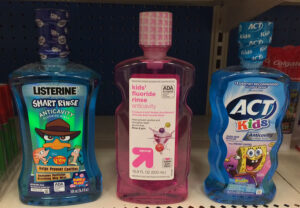 There are so many ways you can protect your teeth throughout your orthodontic treatment. We recommend you brush your teeth at least two times per day, floss regularly and protect your mouth and appliances from damage by making smart food choices. But did you know there is another, often forgotten, way to keep your teeth clean and healthy during your treatment? Fluoride, a mineral found in your water and many dental products can keep your teeth strong.
There are so many ways you can protect your teeth throughout your orthodontic treatment. We recommend you brush your teeth at least two times per day, floss regularly and protect your mouth and appliances from damage by making smart food choices. But did you know there is another, often forgotten, way to keep your teeth clean and healthy during your treatment? Fluoride, a mineral found in your water and many dental products can keep your teeth strong.
 February is National Children's Dental Health Month, and the team at Bel Air Orthodontics want to remind everyone about the importance of good oral hygiene and the role it plays in the health of your teeth and the success of your orthodontic treatment.
February is National Children's Dental Health Month, and the team at Bel Air Orthodontics want to remind everyone about the importance of good oral hygiene and the role it plays in the health of your teeth and the success of your orthodontic treatment.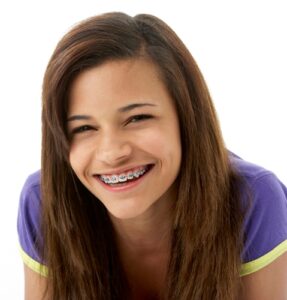 It's National Dental Health Month, and the team at Bel Air Orthodontics thought it would be a great time to share some oral hygiene tips.
It's National Dental Health Month, and the team at Bel Air Orthodontics thought it would be a great time to share some oral hygiene tips. The busy holiday season is just around the corner, and so are the social activities and parties that go with it. It's also a time when Bel Air Orthodontics is busy replacing broken or lost retainers. Why you ask? There a number of factors, but it comes down to the fact that your retainer is spending too much time out of your mouth! Holiday fun brings a change in your daily routine, more meals with family and friends, and that usually means more opportunities to lose, break or forget your retainer.
The busy holiday season is just around the corner, and so are the social activities and parties that go with it. It's also a time when Bel Air Orthodontics is busy replacing broken or lost retainers. Why you ask? There a number of factors, but it comes down to the fact that your retainer is spending too much time out of your mouth! Holiday fun brings a change in your daily routine, more meals with family and friends, and that usually means more opportunities to lose, break or forget your retainer. With the start of a new school year, parents and kids everywhere are heading out to stock up on back-to-school supplies. If you're undergoing orthodontic treatment, we'd suggest adding a few extra supplies to your backpack. Here's a list of items that will help make your school year braces-friendly and worry free:
With the start of a new school year, parents and kids everywhere are heading out to stock up on back-to-school supplies. If you're undergoing orthodontic treatment, we'd suggest adding a few extra supplies to your backpack. Here's a list of items that will help make your school year braces-friendly and worry free: One of the big rites of passage for young adults is wisdom teeth removal. Of course, there are people who can actually fit those third molars in their jaws comfortably and there are a startling number who don’t even grow them in the first place, but for people who do need their wisdom teeth removed, it’s fun to post pictures of their swollen cheeks and videos of anesthesia antics while enjoying lots of ice cream and smoothies. So what’s the deal with these teeth so many people need removed?
One of the big rites of passage for young adults is wisdom teeth removal. Of course, there are people who can actually fit those third molars in their jaws comfortably and there are a startling number who don’t even grow them in the first place, but for people who do need their wisdom teeth removed, it’s fun to post pictures of their swollen cheeks and videos of anesthesia antics while enjoying lots of ice cream and smoothies. So what’s the deal with these teeth so many people need removed?
 According to the American Dental Association, a person’s smile outranked eyes, hair and body as the most important physical feature. While smiling is a great way to get yourself noticed, it turns out that it can also help your body function better. Since June is National Smile Month, we thought it would be a great time to share some good reasons to show off your pearly whites:
According to the American Dental Association, a person’s smile outranked eyes, hair and body as the most important physical feature. While smiling is a great way to get yourself noticed, it turns out that it can also help your body function better. Since June is National Smile Month, we thought it would be a great time to share some good reasons to show off your pearly whites:
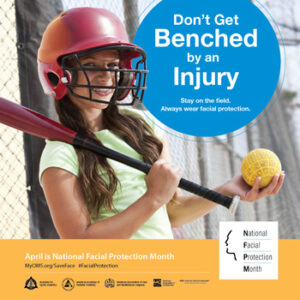 April is National Facial Protection Month, and the team at Bel Air Orthodontics want to remind parents, coaches and athletes to play it safe as they prepare to suit up for both recreational and organized sports. Whether at practice, at a game, or simply enjoying some fun in the neighborhood, a sports-related injury can happen in an instant. That's why it's important to take precautions to protect your face and teeth from injury. Dr. Godwin suggests you take these simple steps to prevent injuries so you can stay in the game:
April is National Facial Protection Month, and the team at Bel Air Orthodontics want to remind parents, coaches and athletes to play it safe as they prepare to suit up for both recreational and organized sports. Whether at practice, at a game, or simply enjoying some fun in the neighborhood, a sports-related injury can happen in an instant. That's why it's important to take precautions to protect your face and teeth from injury. Dr. Godwin suggests you take these simple steps to prevent injuries so you can stay in the game: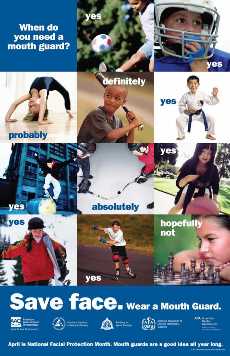
 With Easter just around the corner, you may be daydreaming about all those delicious treats hidden in baskets and colorful plastic eggs. Unfortunately some of the most popular Easter candies are ooey, gooey, caramel-filled, and sticky sweet. They can get trapped in braces and possibly lead to tooth decay.
With Easter just around the corner, you may be daydreaming about all those delicious treats hidden in baskets and colorful plastic eggs. Unfortunately some of the most popular Easter candies are ooey, gooey, caramel-filled, and sticky sweet. They can get trapped in braces and possibly lead to tooth decay.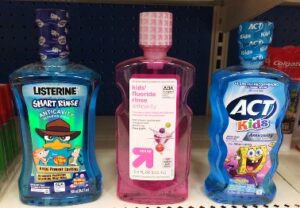 There are so many ways you can protect your teeth throughout your orthodontic treatment. We recommend you brush your teeth at least two times per day, floss regularly and protect your mouth and appliances from damage by making smart food choices. But did you know there is another, often forgotten, way to keep your teeth clean and healthy during your treatment? Fluoride, a mineral found in your water and many dental products can keep your teeth strong.
There are so many ways you can protect your teeth throughout your orthodontic treatment. We recommend you brush your teeth at least two times per day, floss regularly and protect your mouth and appliances from damage by making smart food choices. But did you know there is another, often forgotten, way to keep your teeth clean and healthy during your treatment? Fluoride, a mineral found in your water and many dental products can keep your teeth strong. It's National Dental Health Month, and the team at Bel Air Orthodontics thought it would be a great time to share some oral hygiene tips.
It's National Dental Health Month, and the team at Bel Air Orthodontics thought it would be a great time to share some oral hygiene tips.

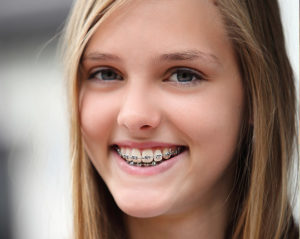
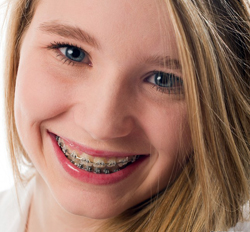














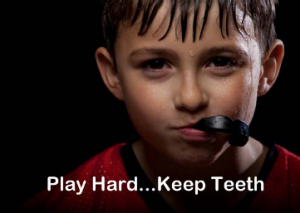









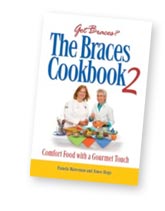 A robust resource, Cookbook 2 supplements its recipes with survival advice for adults in braces. The authors offer coping techniques for adults in the business world, tips for difficult days, and practical suggestions for dining out and grocery shopping.
A robust resource, Cookbook 2 supplements its recipes with survival advice for adults in braces. The authors offer coping techniques for adults in the business world, tips for difficult days, and practical suggestions for dining out and grocery shopping.



